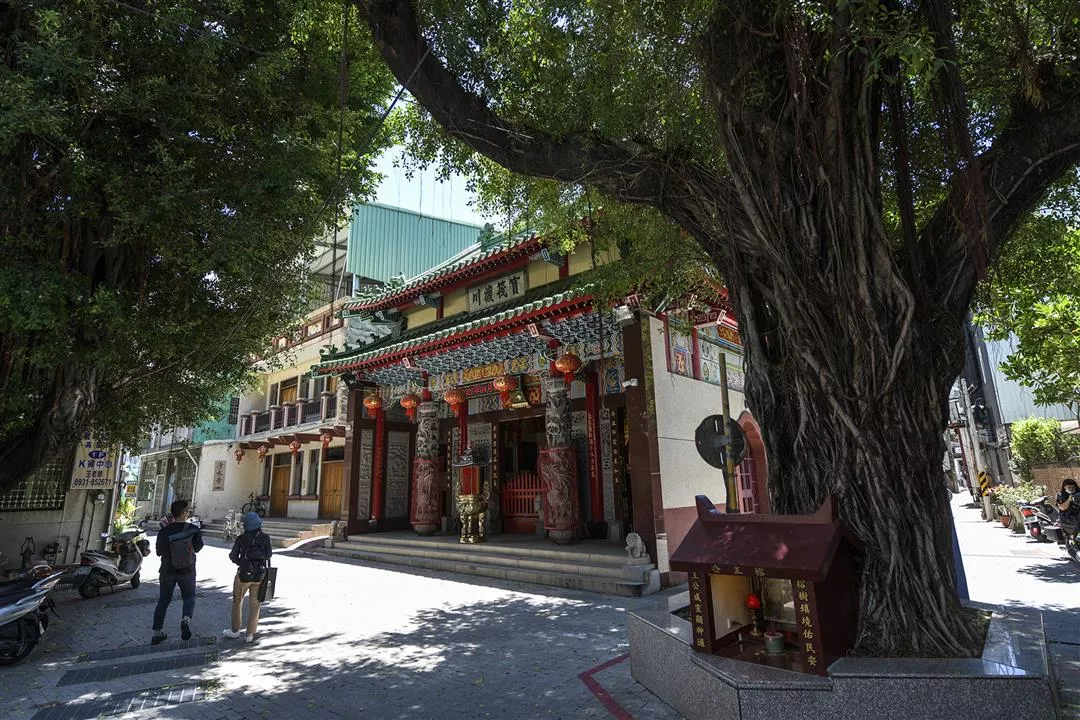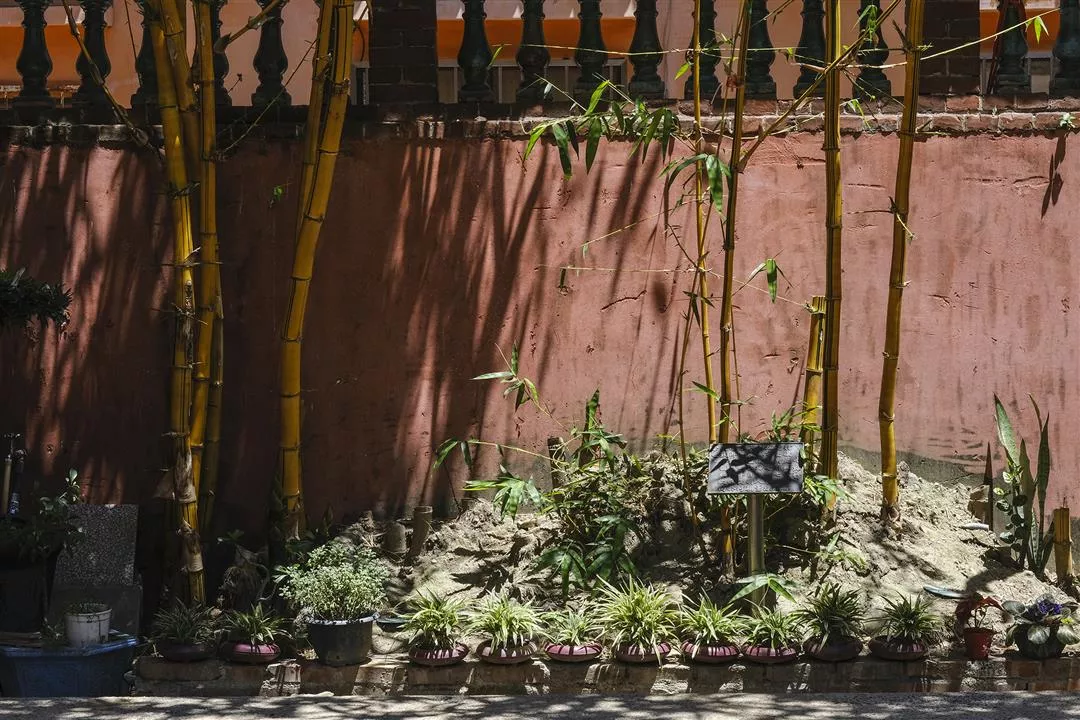Sounds as cultural clues
When we try to acquaint ourselves with a certain place, sounds can sometimes deepen our appreciation of it. In Tainan’s Old Town, the Koxinga Shrine and Koxinga Ancestral Shrine are the only temples that have bamboo groves. When giving guided tours in the ancestral shrine, Yang usually begins by inviting his visitors to listen to the wind soughing in the grove. Only after that will he explain what this particular bamboo is: Bambusa multiplex, a favorite of Koxinga’s wife. The shrine’s Japanese-style ablution pavilion also reminds us that Koxinga’s mother was from Japan, shedding more light on the feelings invested in this place.
Thanks to its bamboo grove, the ancestral shrine is graced with different sounds in different seasons. In autumn and winter, the path outside the walls is strewn with bamboo leaves, making a distinctive sound when someone walks on them. “When I hear the crisp crunch of dry leaves coming from a lane, I’ll know that someone is walking around the Koxinga Ancestral Shrine. This is a soundscape peculiar to this place—a so-called ‘sound mark,’” Yang says.
Through sounds, we can gain a profounder insight into a historic site. Rather than merely signifying the present moment, sounds sometimes offer clues to particular contexts in the past.
For example, when recording sounds near Qingshui Temple, Yang was surprised to hear the sounds of water flowing under the ground. He later realized that hidden underneath the tiled path was Fang Creek, which has a long history in Tainan’s Old Town. A plaque hanging on Qingshui Temple—with an inscription that means “crossing over on a precious barge”—echoes this stream.
Legend has it that in the Qing Dynasty, a log of wood shaped like a Buddhist deity was carried here by the creek. Local residents picked it up and made it into a sculpture of Guanyin, the bodhisattva of mercy and compassion. It’s hard to associate this story with the smoothly paved street in front of Qingshui Temple today. But if we walk toward a concrete drain cover inscribed “Shuiliu Guanyin” (“Waterborne Guanyin”), and prick up our ears to listen, the legend will turn into a vividly real experience.

Fang Creek flows by in front of Qingshui Temple in the West Central District of Tainan. Although we can no longer see the creek itself, its sounds remind us of its existence.

ViVo Creative Culture Workshop has collected the sounds of winds soughing in the bamboo grove at the Koxinga Ancestral Shrine.